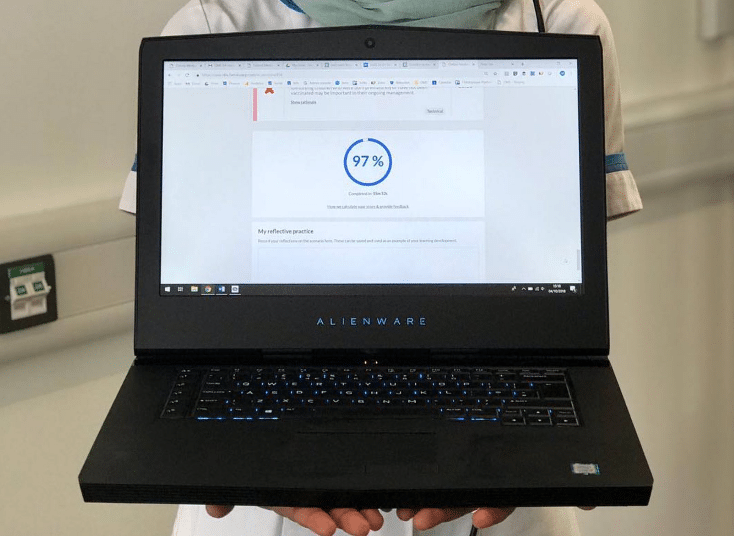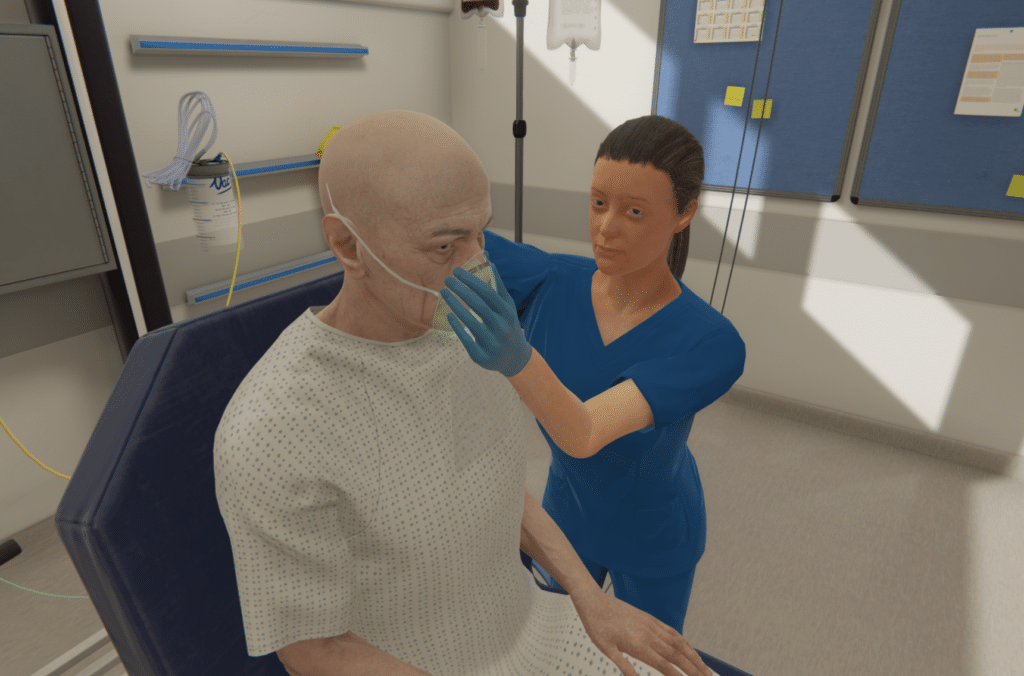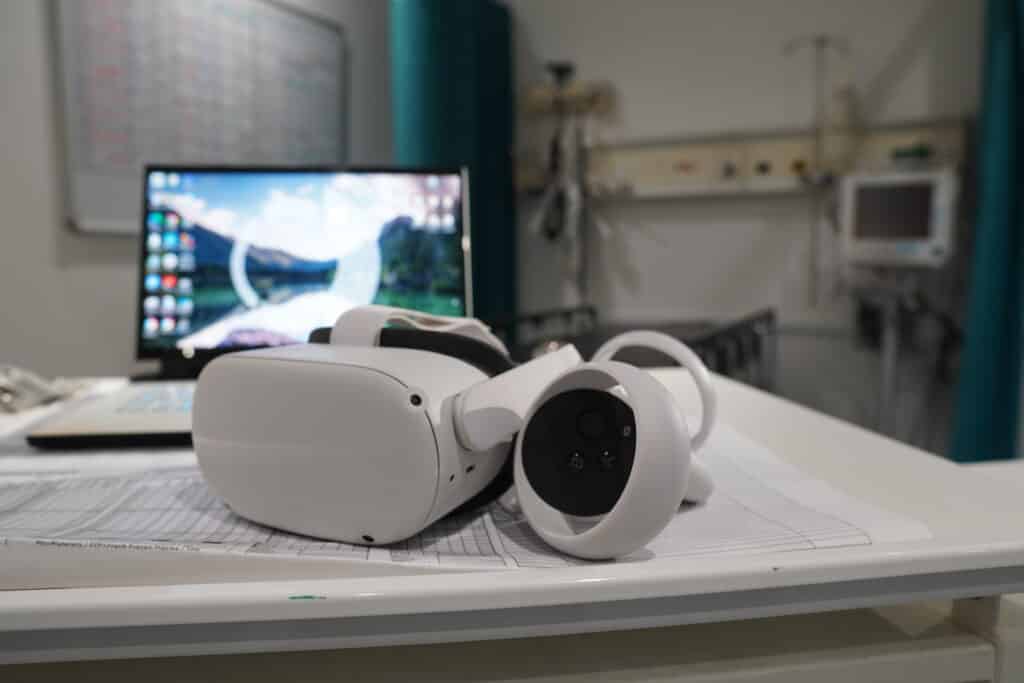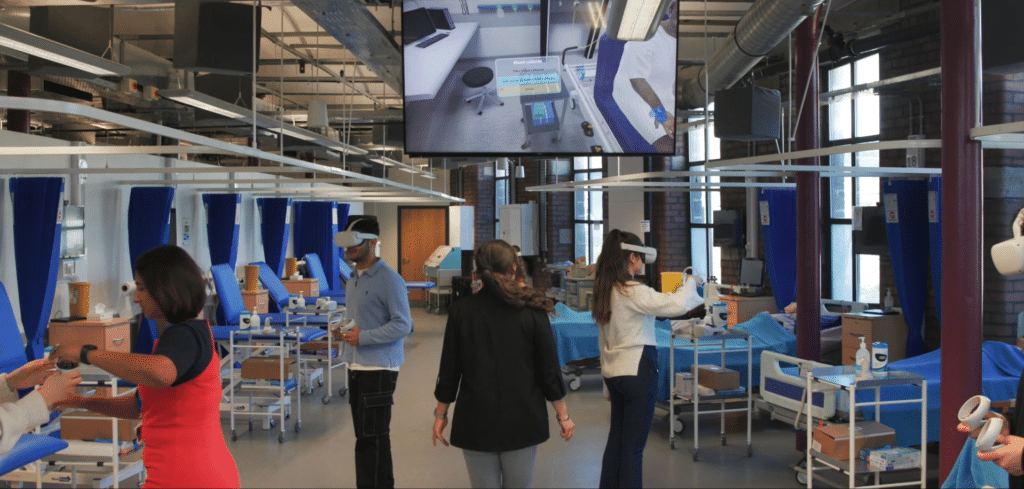At a time when learners are most vulnerable, learning brand new skills, in a whole new world, and likely overwhelmed, it’s the educators who are steering and guiding them along the path to being fully-fledged clinicians.
As educators pioneer new waves of teaching and learning, there’s been a lot of adoption of AI-powered tech like virtual reality. And even if you’re an educator at the helm of it all, implementing an entirely new form of simulation can feel daunting to say the least.
Building the roadmap for VR implementation
Mapping an entirely new form of simulation into your existing curriculum can feel like a mountainous task on top of the already-full plate many educators are working through. And while the excitement may be there, it still takes work to put it all together in a meaningful and intentional way for learners.
Maybe you’re starting from square one – you know VR exists, maybe you or someone you know enjoys playing games in VR, and maybe you know that VR is making significant impacts in both academia and healthcare.
But if you’re new to the world of virtual reality, it can be hard to think up all the ways it can work to benefit your learners and educators all on your own.
From using it in the classroom to complement didactic learning to remote accessibility for deliberate practice at home – even ways you may not have ever thought about like using VR for unbiased assessments or for specific needs like exam prep or the transition to practice.
So many options, it can feel like decision-overwhelm!
But that’s why experts are here – to help guide you along the way and get the heavy lifting done in the background, so you can narrow down your options and find the best ways to help your learners using this tech.
To help you visualize how VR can fit into your existing courses, Educational Specialists (ES) offer curriculum mapping as a complimentary service when you’re on the path to partnering with us.

Curriculum mapping with OMS
Why we do it in the first place
Many of us at OMS have been educators ourselves, so we know a thing or two about the work you all have going on at any given time. It’s no joke!
Our experience & expertise
OMS Educational Specialists have a wealth of experience in direct patient care, from areas like med-surg to women’s health to flight nursing (the list goes on!).
Because of their experiences in patient care, education, and now VR technology, our ESs have a unique understanding of the intersections of the needs for students, practitioners, & educators, and how VR is positioned to facilitate optimal outcomes.
It’s not only our Educational Specialists who come from clinical backgrounds. OMS Clinical Authors, the incredible minds who create our scenarios, also come from patient-centered backgrounds, with years of experience in patient care and healthcare education.
As part of the scenario-creation process, all OMS scenarios undergo a rigorous peer review process to ensure they’re aligned with standards of best practice.
Another key feature of OMS scenarios is that they are already competency-mapped and can be mapped to an existing framework, like to the AACN Essentials or the NMC.
And while you know your course(s) best, we also know our library has over 240 existing scenarios (…and counting!).
Tailoring the experience
OMS scenarios touch on so many aspects of care – just like in real life, any given scenario is nuanced and can involve lots of different points of care.
As part of a med-surg scenario, for instance, you might learn that your patient’s neighbors have reported hearing frequent falls.
One OMS scenario could touch on multiple clinical concepts, and with a bit of information about your goals, we can provide you with multiple avenues to meet learning objectives.
OMS VR scenarios also come in several modalities.
For example, you can choose to use Communication scenarios, which are AI-driven so you can have a real conversation with a virtual patient, family, or team member.
Or, you can use Multi-patient scenarios that allow you to lead a set of scaffolding scenarios (up to 5 patients at once), to work on bridging the gap in the transition to practice.
There are lots of options and directions you can go in mapping VR to your curriculum. We want to make sure you’re getting the right information up front, so you can make an informed decision about which way to go.
We could just toss you a list of all our scenarios, and let you do all of the reading, thinking, and mapping yourself, but that’s not our game.
When you work with OMS, we tailor the journey to you, so you don’t ever feel as though you’re lost in a sea of information with no direction or guidance.

Getting the most out of OMS
You’re the experts in education, and as the experts in VR, we’re here to collaborate with you – or let you take a much-needed brain break from all that mapping – and work asynchronously so you can visualize how VR can work within your program.
Our mentality is that it’s good for everyone if scenarios can be mapped specifically to learning objectives, concepts, or competencies.
We operate with the intent to benefit learners, educators, and ultimately, patients – we’re not here to force a scenario that doesn’t fit on anyone. That’s good for no one.
We’ll tell you if something isn’t the right fit, if it’s on the roadmap, or if it’s something you can easily adjust using our authoring platform, OMS Create.
Ultimately, we’re here for the betterment of patient care, and preparing the next wave of clinicians is a huge part of that process.
And if you’re going to put in all the work it takes to build out your VR simulation program, we want to ensure that we’re giving you everything you need to meaningfully integrate it into your curriculum, so students (and educators) get the most out of all that hard work.
How we do it
The basics of curriculum mapping with OMS
Here’s a quick step-by-step of how the process works:
- Get on a call with an Educational Specialist
- Discuss your curriculum, goals, and learning objectives
- Provide your ES with relevant materials
- Up to you – collaborate together on a call or let your ES work asynchronously
- ES reviews your materials, learning objectives, and competencies
- ES sources appropriate scenarios that match your criteria
- ES provides you with a document outlining curriculum map
- You review the document provided by ES
- Feedback with any edits or questions
- ES takes feedback, makes edits, and provides updated versions
- Repeat until you’re happy with the final curriculum map
- You approve and finalize the curriculum map

A detailed look at OMS curriculum mapping
There’s lots of ways we can map VR scenarios to a curriculum, but a few of the major categories include:
By learning objectives
Have a specific learning objective in mind? Let us know! Chances are, you’re not the first to ask us, and we can point you in the right direction.
We can do this from your working syllabus or from your larger course objectives. Whether it’s one day of simulation or threaded throughout the entire course, we can help you figure out how it all fits together so your learners don’t miss a beat.
Each OMS scenario comes with its own reference material with learning objectives that align with the contents and skills in each simulation. We provide these notes alongside our recommendations, so you can be sure that your VR simulations will align with your learners’ needs.
By content
This is a good way to go if you’re looking at something higher-level or more broad in scope. It’s not necessarily aligned to a particular competency, but you know your learners need more experience with the topic.
Maybe you already know you’ll need content for topics like “patient communication”, “fundamentals”, or “nursing emergencies”, but you’d like multiple options to choose from – we can do that, too.
By competency framework
Are you gearing up to send out a report to an accrediting body? Let’s get specific, then!
We can get as detailed as you like, aligning OMS scenarios with specific core competencies of existing frameworks. Our Educational Specialists can map out exactly the path students will take to meet specific competencies using OMS so you can rest easy when you send out your plan.
All you need to do is review the work and let us know what you think!
Our team will tailor to your needs until you’re feeling the Goldilocks effect – it’s just right.
Next steps
Know that if you choose to start the journey with OMS, we’ll be right by your side throughout the entire process – from embedding to implementing to data collection and beyond.
Our team of experienced clinicians and educators have special insight into how VR can fit best into your curriculum while ensuring everyone involved is getting a value-add right from the start.
To get started in talking with your Educational Specialist, book a demo here – we look forward to speaking with you soon!
